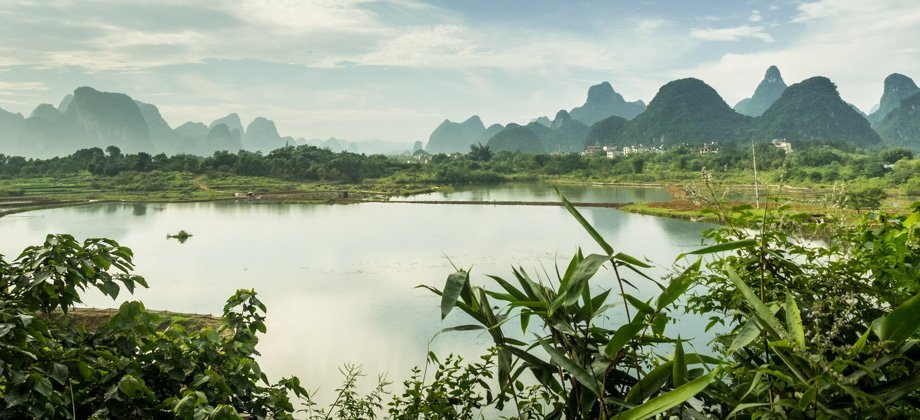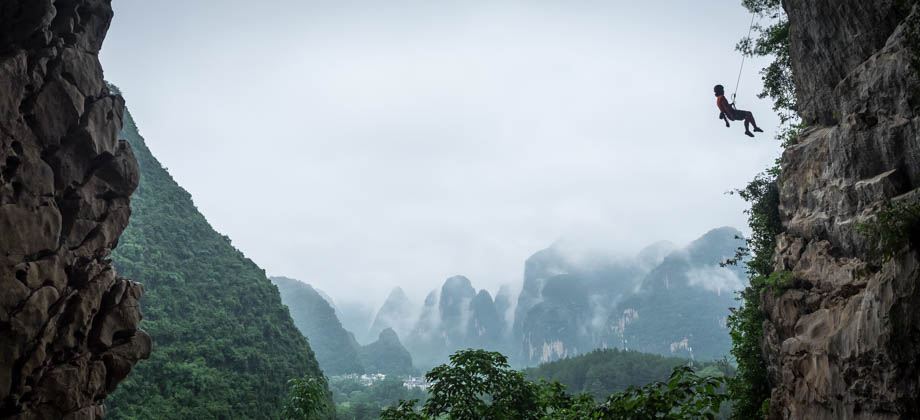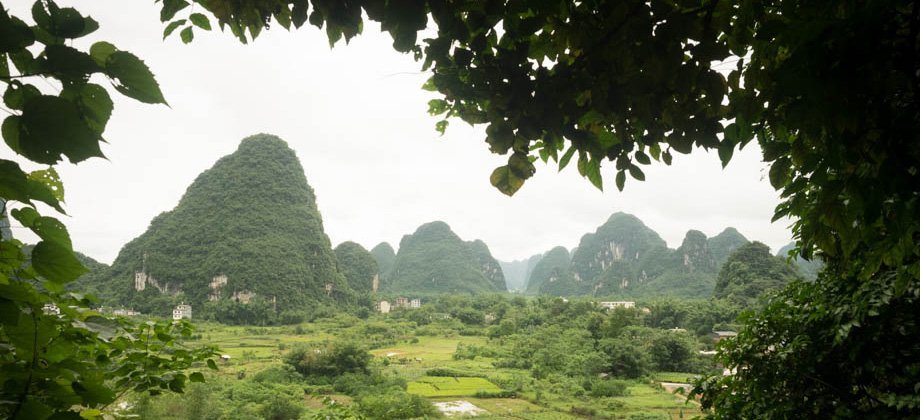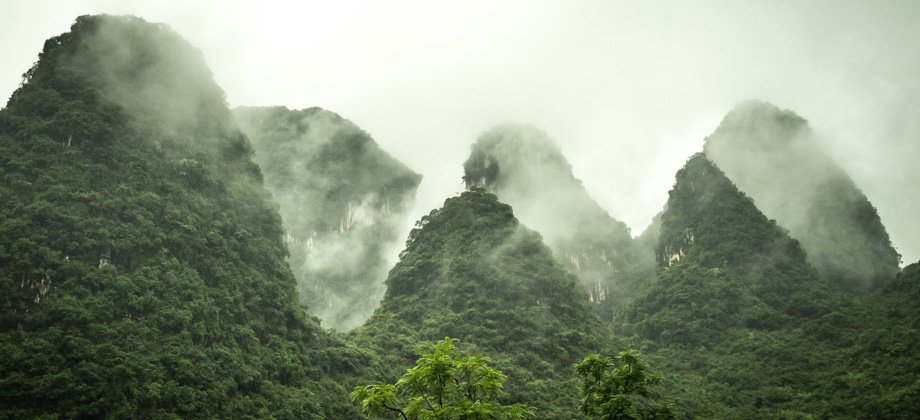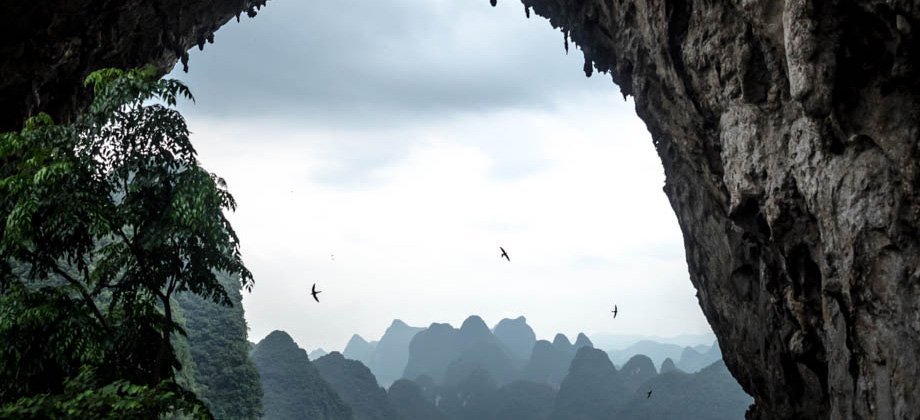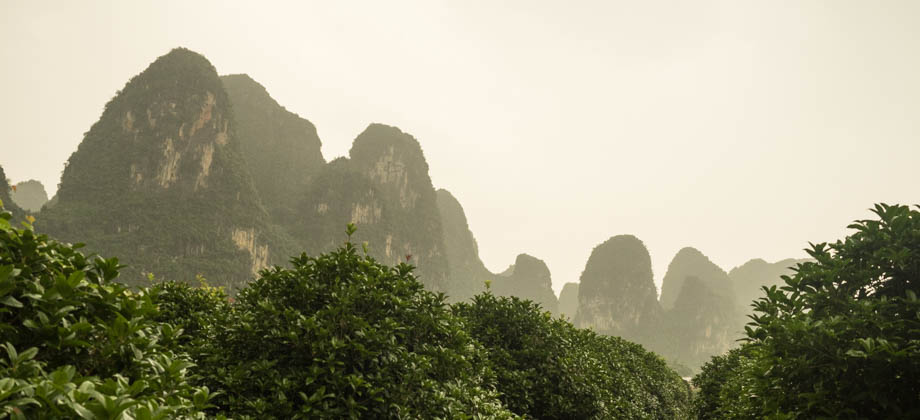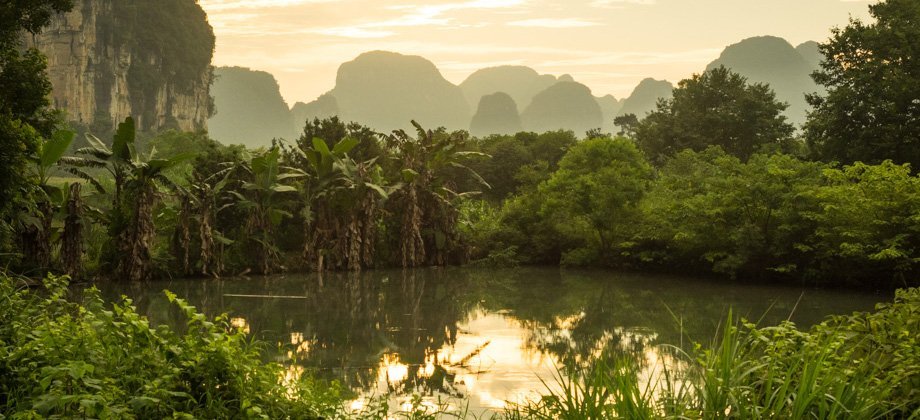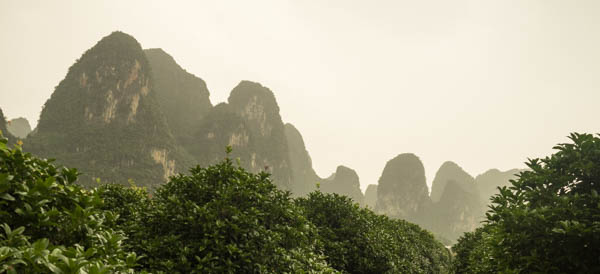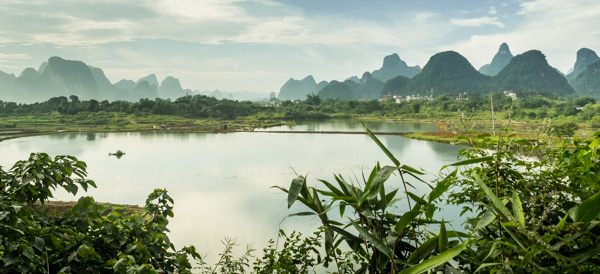Yangshuo Day 06 – Xingping
Laozhai Mountain
It was well before midday by the time we got back to Xingping, so we still had the whole day in front of us. So after an early lunch and some soya bean drink (
CNY17), we set off to climb one of the closest karst towers to the town--Laozhai Mountain (Mandarin: 老寨山). A gazebo that is called 'Bird's View Pavilion' is located at the top of the tower, and it took us only half an hour or so to get there. The vertical gain however, was 296m over a distance of 600m, which meant that the climb was fairly steep. This 47% or 25 degree gradient was made much easier though with the presence of over a thousand stone steps that led to the top.
*Click here to learn more about the difficulty rating.
**Despite the incline, the rating for the terrain was reduced due to the stairwell that leads to the peak

We returned to the riverside right next to the old Xingping bridge and began walking west along the quay, next to the public toilet. The walkway then swung south (since it was on the corner that met the river), before coming up to the trail head right after. The beginning of the trail

is marked by signs as well as a large map with the word "Go" that has been painted across the wall. Camphor trees
(Cinnamomum camphora) and banyan figs
(Ficus benghalensis) can be found growing around the trail head, which made for a refreshing change from the forests of bamboo that are so ubiquitous. Camphor has traditionally been used as a culinary spice as well as an incense, although I have mostly used camphor topically as both an
analgesic and an
antipruritic.
The stairs began soon after and became steeper and steeper the further we went. We passed gravestones and another gazebo called the 'Peace Pavilion' before the stairwell slowly began to narrow as it made its way up the steep slopes. It was still raining then so we had to take extra care in sections that were quite slick. Once again, as was done for
Pantao Hill, we bowed our heads to escape the rain, and focused on all the insects that were all around us.
 The steep stairwell; and metal ladder
The steep stairwell; and metal ladder
Instars
I found numerous examples that illustrated different developmental stages of insects. One of the terms that is used is 'instar', and it refers to stages between each moult until the larva reaches the adult stage, or rather the stage of sexual maturity. Moths, like other insects, have five instars: the first instar is right after it hatches from the egg, and the fifth instar is right before the larva forms its chrysalis (pupa stage). The five instars of cicadas
(Family : Cicadidae) are spent underground though, and for several years at that. The fifth instar of the cicada nymph finally emerges from the ground and latches onto a tree, before beginning its final moult. The adult cicada, now winged, then lives for another few weeks above ground, solely for the purpose of reproduction.
 Third or fourth instar of a lappet moth caterpillar (Trabala sp.); the fourth instar nymph exoskeleton (called 'exuviae') of a cicada (Family : Cicadidae)
Third or fourth instar of a lappet moth caterpillar (Trabala sp.); the fourth instar nymph exoskeleton (called 'exuviae') of a cicada (Family : Cicadidae)
 Early instar of a tussock moth caterpillar (Tribe : Orgyiini)
Early instar of a tussock moth caterpillar (Tribe : Orgyiini)
 Early instar larval cluster
Early instar larval cluster
The stairwell eventually made its way to a metal ladder. The ladder ascended almost vertically for perhaps five metres or so, and felt very secure and sturdy. The route to the top emerged out of the forest canopy shortly after that and directly to the 'Bird's View Pavilion'. The fresh air that greeted us was a welcome change from the stifling humidity of the forest, and the views that came right after were incredible! The view faced east towards the grid of houses and roads that made up the town of Xingping, as well as the meandering tributaries that led to the Li River and the numerous green fields that lay behind. The real panoramic view on the other hand, lay completely on the other side.









